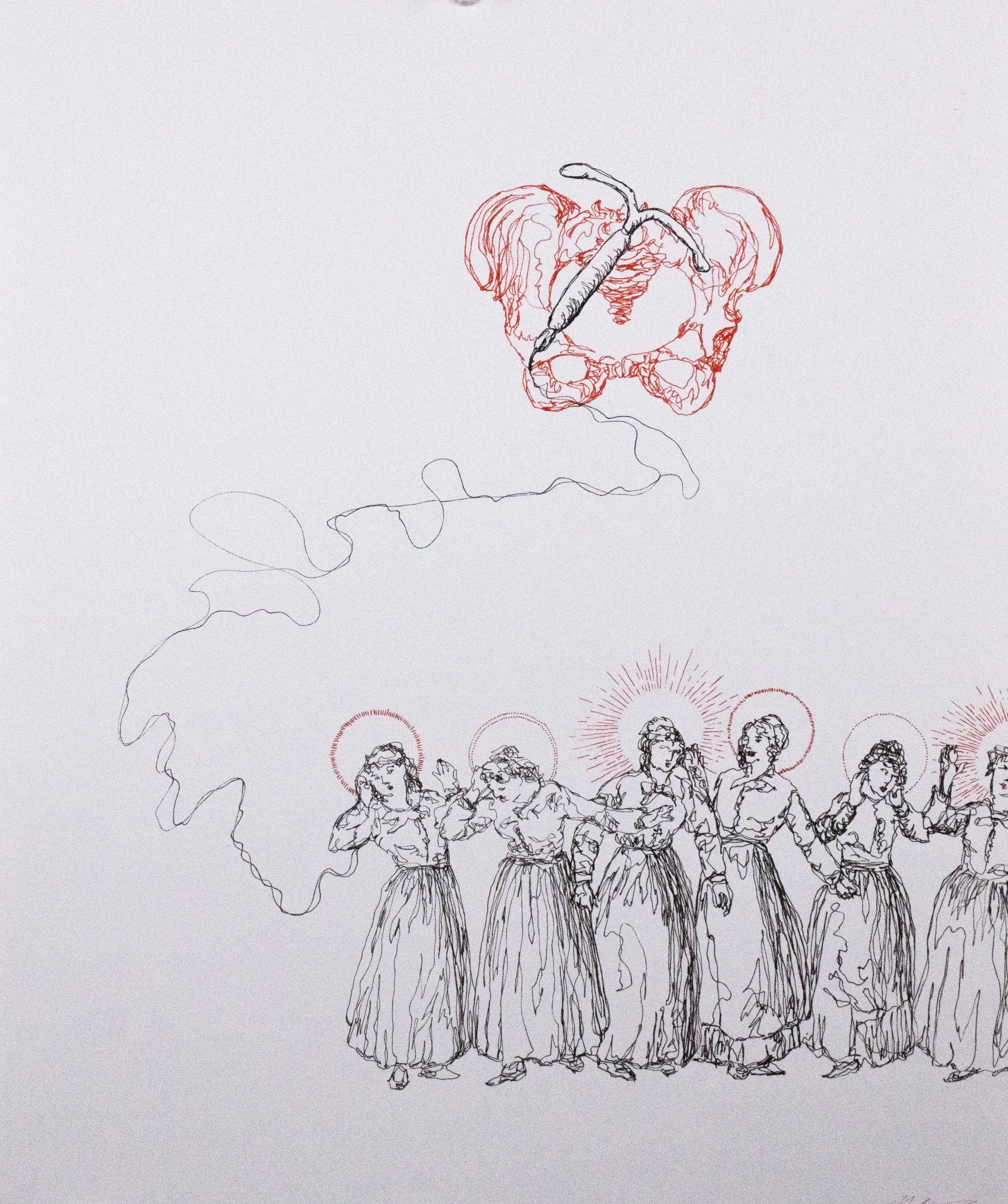Hysterics

Hysterics | 2023 | Ink | 11.5 x 13.5 in

Art Of The Collection | 2023 | Ink | 11.5 x 13.5 in

My Body Is A Cage | 2023 | Ink | 11.5 x 13.5 in

A Piece Of Me Is Gone, But I've Never Felt More Whole | 2023 | Ink | 11.5 x 13.5 in

Impressions | 2023 | Ink | 11.5 x 13.5 in (SOLD)
This body of work encompasses my experiences and thoughts regarding issues that are the focus of the contemporary feminist movement. This ongoing series provides both a reflective practice while providing a space for this assemblage of research to exist beyond my person.
Present within my work are themes that consider the objectification and self-objectification of women: how individuals and communities alike can distill a person down to their parts. I dig deep into the conversation of violence against women, drawing my personal experiences of domestic abuse as a child and sexual assault I endured as a teenager. Women are valued for their bodies—how their physicality can serve and satisfy others—but this unwanted objectification reveals a disparity between a hyper-cultural focus, but a lack of research, study, and representation within science and medicine. Our understanding of female anatomy and acceptance of concepts surrounding female pleasure has continually lagged understanding of male anatomy and acceptance of male pleasure. Even when sex education isn’t a point of contingency, curricula censor topics and behaviors integral to every human being, regardless of identity. This educational ignorance and systemic shaming then affects individual opinions, cultural practices, and regulatory legislation that ultimately oppress rights to bodily autonomy.
These issues are pervasive to my life. They enlighten my worldview, shape my behaviors, and impact me in very obvious, as well as insidiously unconscious, ways. I tell stories I haven’t had the strength to utter before and take up space I didn’t think I deserved to enhance recognition, advocate for change, and empower others to do the same. I present my personal experiences to solidify and contextualize these encompassing social issues.
I chose “hysterics” as the title, since this word has a complex and deeply gendered history. Hysteria was deemed a medical illness with symptoms only afflicting women. These symptoms (emotionality, irritability, anxiety, etc.) are attributes that have defined women historically. Since emotion was equated with the feminine, and reason with the masculine, emotion was seen as a flaw, an inferiority, and a trait used to disenfranchise people.
It seems that hysteria lacked reason and reason lacked hysteria.
The two aren’t mutually exclusive. My rational and analytical considerations surrounding my extensive knowledge of these topics makes me emotional: these inequalities upset me and should be upsetting to others. Being emotional or upset doesn’t make your point—or a movement’s point—any less valid.
That passion that burns and roils in my heart keeps my hope alive and motivation strong. It is exactly what we need to initiate change. If you are moved by this work, ask yourself why.
Let us renew, repurpose, and own hysterical.